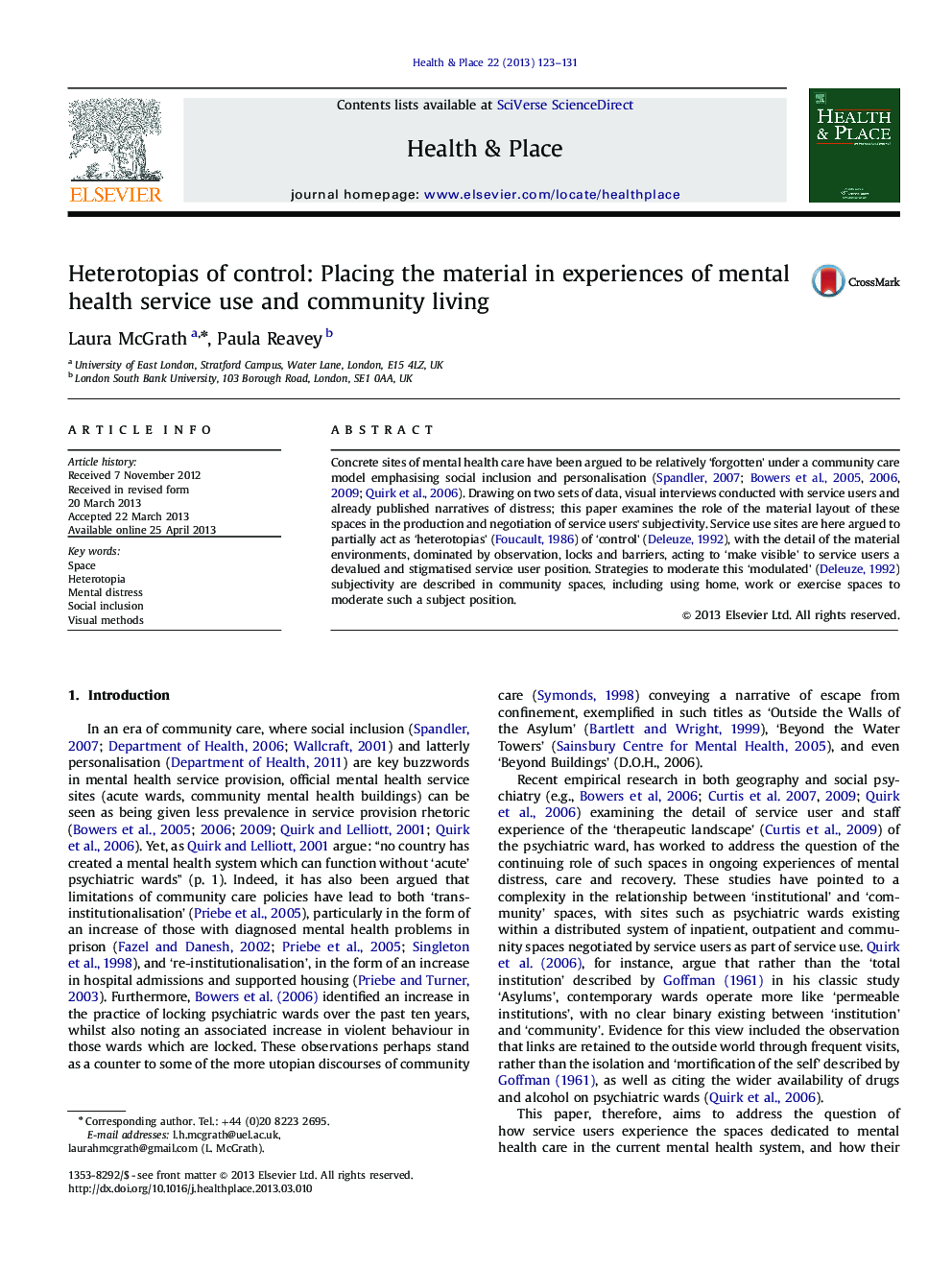| Article ID | Journal | Published Year | Pages | File Type |
|---|---|---|---|---|
| 7459165 | Health & Place | 2013 | 9 Pages |
Abstract
Concrete sites of mental health care have been argued to be relatively 'forgotten' under a community care model emphasising social inclusion and personalisation (Spandler, 2007, Bowers et al., 2005, Bowers et al., 2006, Bowers et al., 2009, Quirk et al., 2006). Drawing on two sets of data, visual interviews conducted with service users and already published narratives of distress; this paper examines the role of the material layout of these spaces in the production and negotiation of service users' subjectivity. Service use sites are here argued to partially act as 'heterotopias' (Foucault, 1986) of 'control' (Deleuze, 1992), with the detail of the material environments, dominated by observation, locks and barriers, acting to 'make visible' to service users a devalued and stigmatised service user position. Strategies to moderate this 'modulated' (Deleuze, 1992) subjectivity are described in community spaces, including using home, work or exercise spaces to moderate such a subject position.
Related Topics
Health Sciences
Medicine and Dentistry
Public Health and Health Policy
Authors
Laura McGrath, Paula Reavey,
